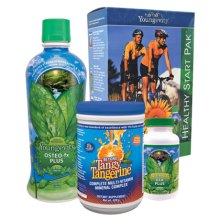Former state vet touts traceability system
http://www.capitalpress.com/article/20140210/ARTICLE/140219993/
Retired Washington State Department of Agriculture Veterinarian Leonard Eldridge says some gaps in credible, accurate information still need to be filled to develop animal traceability. The department is building its new Animal Tracks searchable database. Eldridge stressed the need for the system to be electronic, which would be easily and quickly searchable. SPOKANE — The Washington Department of Agriculture is developing an animal traceability system to easily search cattle records in the event of a disease outbreak.
Retired state veterinarian Leonard Eldridge stressed the need to fill information gaps during the Spokane Ag Expo and Pacific Northwest Farm Forum.
He sees high risks in feeder and slaughter cattle practices outside the state and cattle trading from one producer to another without notifying the department or third-party verification.
Eldridge said the state realized it needed a better traceability system after bovine spongiform encephalitis was discovered in a cow in December 2003. That cow was found to have been exposed in Canada, he said, but his department could not find all cows that ate the same feed there.
“There are exemptions for female dairy cattle to be traded in the state without telling the Department of Agriculture, and I think that was a big issue,” Eldridge said. “It’s still a gap today we need to fix. We need to go to the whole industry and say, ‘Tell us how to do this.’”
WSDA animal disease traceability program manager David Hecimovich said Washington agriculture director Bud Hover is removing the exemption. The department will announce the rule change in February or March, which could be official by mid-summer, Hecimovich said.
The department has established three animal health investigators.
Eldridge estimates establishing the state’s new “Animal Tracks” program costs $440,000 each year for two years. State legislators approved $881,000 for the department to begin building the system last year.
The traceability system would include information on documents showing animal movement, change of ownership, brand information and disease and test records.
“You could search for any one of these pieces and the rest of the information comes up,” Eldridge said. “That’s what we said we needed.”
The department provides monthly updates on the status of implementing the system.
The future cost of maintaining the program is uncertain. Eldridge stressed the need for communication with the entire industry about the best methods to protect the industry and keep costs low. Committee feedback called for a stable source of funding each year, with costs shared by taxpayers and all aspects of the industry, he said.
Eldridge believes the system needs to be electronic. Paper records are time-consuming and difficult to search through quickly, he said. One-time data entry is faster, eliminates a lot of work and reduce the possibility of error.
State departments are likely to lead the development of electronic databases, Eldridge said, and USDA will likely eventually follow suit.
Online
http://agr.wa.gov/foodanimal/animalid/adtproject.aspx


Mar 08, 2014 @ 18:31:37
Hello to every , since I am really keen of reading this weblog’s post to be updated on a regular
basis. It includes good stuff.